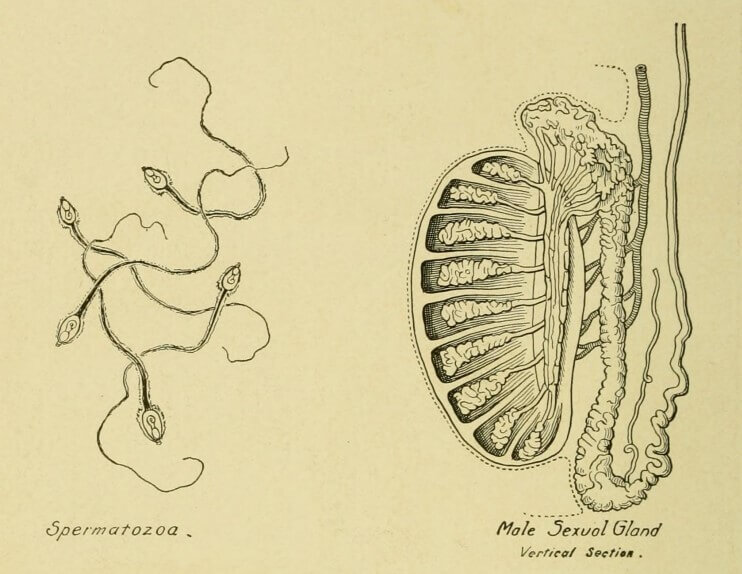Gendered medical injustice has been an ongoing point of discussion in feminist spaces throughout history, being especially prevalent in recent months with the fight for safe, legal abortion access being a hot-button issue in American politics. From the dismissal of symptoms to misdiagnosis to outright abuse at the hands of medical “professionals,” the poor treatment of people assigned female at birth in medicine has been pervasive for centuries.
“Hysterical” Women Through History
Perhaps the most prevalent and oft-discussed examples of the mistreatment of female bodies throughout history is the now-defunct diagnosis of “Female hysteria” – a catchall term that lumped together any variety of physical and psychological symptoms a person with a vagina might exhibit.
 Image by No-longer-here on Pixabay
Image by No-longer-here on Pixabay
Popularized in the 18th century (though the concept came to be back in ancient Greece), one could be diagnosed with hysteria if they experienced symptoms including abdominal pain, elevated heart rate, “excessive” emotions, an increase or decrease in sex drive, an increased appetite, and anxiety, in addition to anything else that would be “undesirable” for a female to express or exhibit. The first mental disorder attributed to exclusively female bodies, hysteria was chalked up to be caused by “sexual deprivation” for those with wombs; the name itself comes from the Greek “hystera”, meaning uterus, and treatment throughout the centuries consisted of “pelvic massages”, in addition to being blasted in the genitals with a hose resulting in a “hysterical paroxysm” (read: A Good Orgasm). Did you know that’s how the beloved vibrator came to be invented?
But What About Men?
Though most commonly attributed to those with uteruses, the diagnosis of psychological and sexual dysfunction being blamed on a failure to meet gendered expectations wasn’t just a female issue. The lesser-known counterpart to hysteria for those assigned male at birth was referred to as “spermatorrhea” in the 1800s. The condition was defined as an “excessive and involuntary discharge of semen,” which was to blame for anxiety, irritability, a lack of confidence, and any other behavior deemed unmasculine. While stimulation of the sexual organs was upheld as the cure for hysteria in females, masturbation, in addition to a domesticated, comfortable, and “unmanly” lifestyle, was interpreted as the culprit behind symptoms of spermatorrhea. The act of male self-pleasure and leakage of semen was thought to demonstrate a lack of self-control and, therefore, masculinity, resulting in the Victorian belief that masturbation was to blame for various physical and psychological ailments. The treatment? The complete opposite of what was suggested for women. For men, the cure was abstinence from masturbation and regular physical activity. It sounds innocent enough, but if one diagnosed with spermatorrhea couldn’t demonstrate the necessary self-discipline, the treatments became much, much gnarlier.
Anti-masturbation medical interventions were nothing short of torture, including, but not limited to, acupuncture of the testes and prostate, forced dilation of the anus, and cauterization of the urethra, which, at the very least, caused extreme physical suffering, if not permanent damage to the body. And, in true Victorian fashion, there was no shortage of brutal anti-masturbation devices. The Stephenson Spermatic Truss from 1876 consisted of, essentially, a jockstrap with a spiked metal lining to prevent erections and a cage to prevent hand-to-penis contact. The Jugum Penis, or “pollutions ring,” had spiked steel teeth that attached to the base of the penis – imagine the pain of getting a boner in that!
 Illustration from the Patent Application for the Spermatic Truss (1876)
Illustration from the Patent Application for the Spermatic Truss (1876)
The Masturbation Moral Panic
The anti-masturbation panic of the Victorian era had horrific consequences for young men at the time. George Drysdale (1825-1904) developed such an intense sense of shame and fear of “going mad” as a result of his masturbation habit and nocturnal emissions that he faked his own death, leaving his family behind, and submitted himself to multiple penis cauterization operations to deaden the nerve endings (the procedures didn’t work). Following Drysdale’s realization that he could not be “cured” of spermatorrhea, he went on to publish Physical, Sexual, and Natural Religion (1855) which advocated for contraception and sexual liberation.
A page from Drysdale’s book.
How Far Have We Come, Actually?
Society’s overall perception of self-pleasure has evolved to be much more accepting, even encouraging, for individuals regardless of sex. In more recent history, the physical and mental health benefits of masturbation are becoming increasingly common knowledge, and our culture has continued to shift towards sexual openness and liberation. However, the strict gendered expectations and assumptions and prudish attitudes about sex that characterized the diagnoses of hysteria and spermatorrhea still rear their heads today. People with uteruses still have their legitimate physical and psychological struggles written off because of their anatomy. Those who dismiss aggression perpetrated by cisgender men still use “sexual frustration” as an excuse. There are all-male online communities on Reddit that share the same idea as the Victorian doctors that handed out spermatorrhea diagnoses: that loss of semen equals the loss of masculinity, and that masturbation signals a lack of self-discipline. abstinence-only sex education still has a grip on American schools. Women are still told that sexual relations with a man will “fix” them, and that self-pleasure is shameful. While there’s relief in seeing how far we’ve moved away from the deeply problematic ideas surrounding sex and health of the past few centuries, and modern information technology has revolutionized sexual education the fight for a medically accurate and liberatory understanding of human sexuality is ongoing.
Top Photo Credit: Illustration from Plain facts for old and young, or, The science of human life from infancy to old age – Page 88 (1903)


